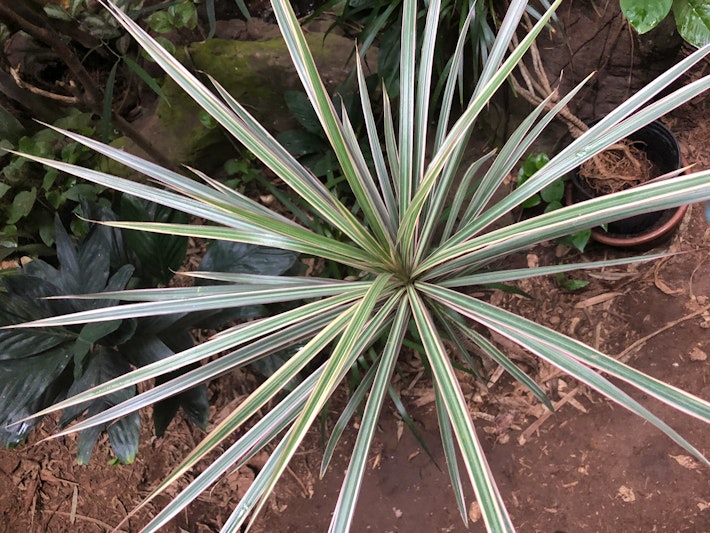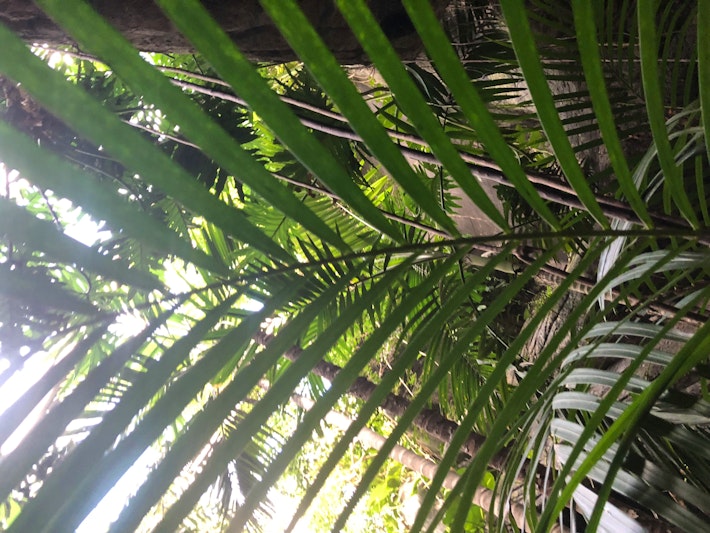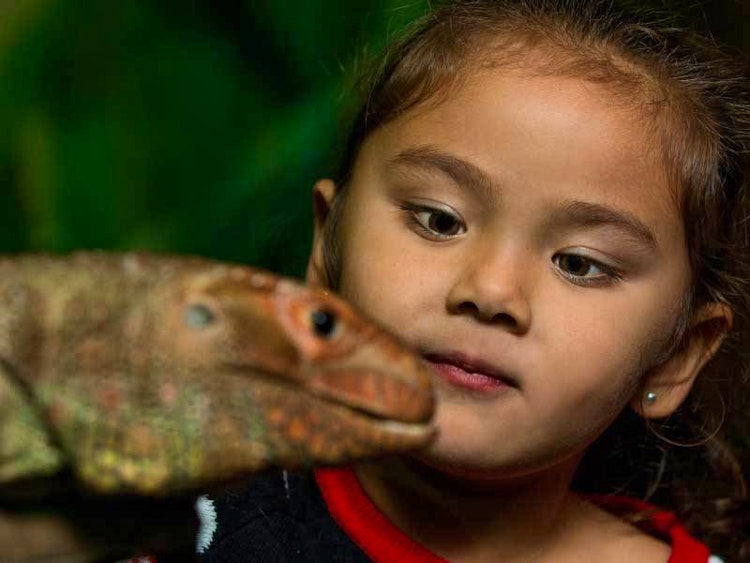It’s not just the animals that need care in our indoor Rainforest
Discovery Place Science
It’s no easy task taking care of an urban rainforest with up to 50 species of plants. For Anil Tailor, aquarist keeper of the Living Collections and Exhibition department at Discovery Place Science, caring for the large number of plants living in the Museum’s indoor Rainforest is a labor of love.

“Every morning, just like you do with your plants at home, we water the Rainforest plants. It takes about 25 to 30 minutes,” says Tailor, who obtained his horticulture degree from Central Piedmont Community College. “We do it old school – by hand, with a hose and sprayer – and we adjust the amount we water depending on the time of year – more in the summer, less in the winter.”
Tailor and fellow team members also complete basic pruning on a regular basis as well as a major pruning once or twice per year. During those major pruning sessions, the team often adds 20-30 new plants, a variation of new species as well as new specimens of existing species, into the Rainforest while also eliminating species that are not thriving.

The vegetation in the Rainforest is made up of predominately tropical plants. “They can handle the 70-to-85-degree temperature range that our exhibit typically stays at as long as they have humidity, so they do really well in the Rainforest,” Tailor says. “We get them from local plant nurseries.”
Before any new plants can come into the Rainforest – or even the Museum building – they must be quarantined for two or three weeks outside. “We don’t want to introduce pests into the Rainforest because one species could wipe out the whole exhibit,” Tailor explains. “Some of the plants we have in the Rainforest have been in there since the exhibit was made, so 25 to 30 years, and the wrong kind of bug could ruin all that history.”

Other challenges? The numerous animals who call the Rainforest their home, especially Herbie, the red-footed tortoise.
“Herbie has a knack for escaping his little designated space in there and roaming around the Rainforest,” Tailor says. “He will eat any piece of green that is in front of him so that becomes a bit of a challenge for the plants.”
The biggest challenge, though, is keeping track of all the individual plants, Tailor says.
“Since plants grow so slowly, it is hard to notice changes when something starts going bad,” he explains. “You have to be really, really observant and stay on top of it, looking for signs of stress and then determining what the cause of that stress is.”




